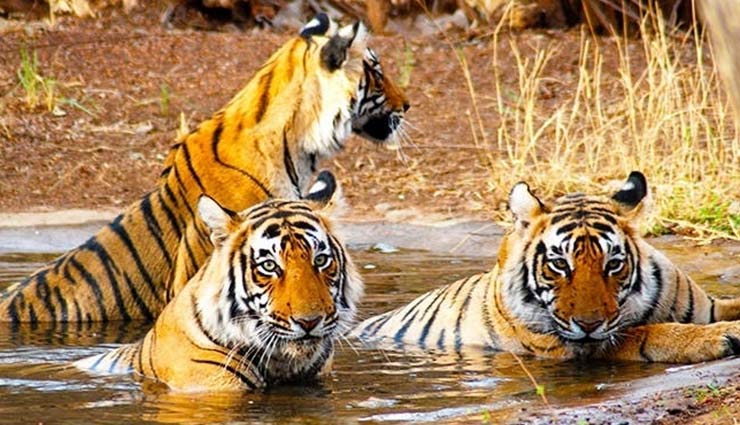Best Escape To Summers In Rajasthan Is Ranthambore National Park
By: Pinki Fri, 27 Apr 2018 4:44:02

Ranthambhore National Park, Ranthambhore is the fortieth largest national park in northern India, covering 392 km². Ranthambhore was established as the Sawai Madhopur Game Sanctuary in 1955 by the Government of India and was declared one of the Project Tiger reserves in 1973. Ranthambhore became a national park in 1980. In 1984, the adjacent forests were declared the Sawai Man Singh Sanctuary and Keladevi Sanctuary, and in 1991 the tiger reserve was enlarged to include the Sawai Man Singh and Keladevi sanctuaries.
Ranthambhore wildlife sanctuary is known for its Bengal tigers, and is one of the best places in India to see these animals in their natural jungle habitat. Tigers can be easily spotted even in the daytime. The best times for tiger sightings at Ranthambhore National Park are in November and May. The park's deciduous forests are characteristic examples of the type of jungle found in Central India. Other fauna include the Indian leopard, nilgai, wild boar, sambar, striped hyena, sloth bear, southern plains gray langur, rhesus macaque, mugger crocodile and chital. The sanctuary is home to a wide variety of trees, plants, birds and reptiles, as well as one of the largest banyan trees in India.
It is situated in the Sawai Madhopur district of southeastern Rajasthan, about 110 km northeast of Kota and 140 km southeast of Jaipur, which is also the nearest airport. The nearest town and railway station is at Sawai Madhopur, about 11 km away. The park is also close to the Kota railway station. RIDCOR operates a mega-highway between Kota and Ranthambhore. Ranthambhore National Park lies at the edge of a plateau and is bounded to the north by the Banas River and to the south by the Chambal River. It is named after the historic Ranthambhore fortress, which lies within the park.
Ranthambhore is known for its large tiger population. As park tourism and the population of neighbouring villages increased, there were more frequent fatal human-tiger interactions and poaching. The Indian government started Project Tiger in 1973 and allotted an area of 60 mi2 of the park as a tiger sanctuary. This area later expanded to become what is now the Ranthambhore National Park.
In 2005, there were 26 tigers living in the park. This was significantly lower than the recorded tiger population of the reserve in 1982, which stood at 44. According to non-government sources there were 34 adult tigers in the Ranthambhore National Park in 2008, and more than 14 cubs. This increase was attributed largely to sustained efforts by forest officials to curb poaching. Villagers in the region were being given incentives to stay out of the park, and surveillance cameras were also fitted across the reserve. The Indian government committed US$153 million for these efforts. They were successful enough to make Ranthambhore eligible to participate in the Sariska Tiger Reserve relocation program. The first aerial relocation, of the male tiger (Dara) from Ranthambhore to Sariska, was done on 28 June 2008 by Wing Commander Vimal Raj, using a Mi-17 helicopter. Unfortunately, this translocated tiger died on 15 November 2010 due to poisoning.




-1714299702-lb.jpg)
